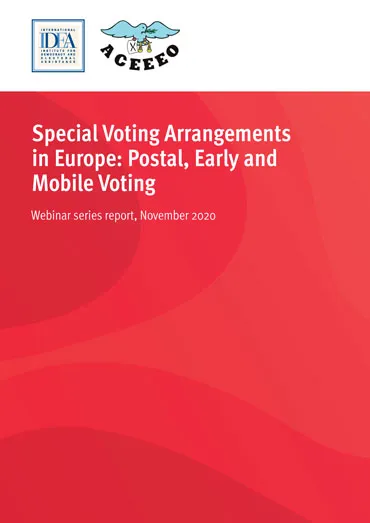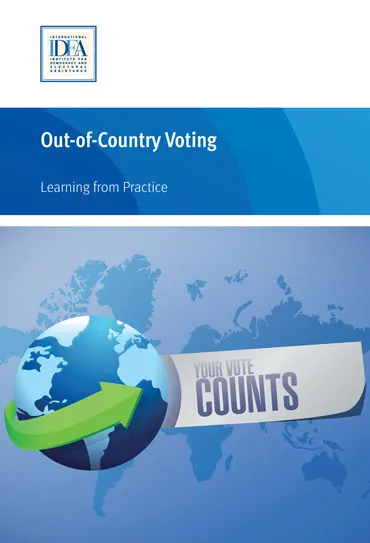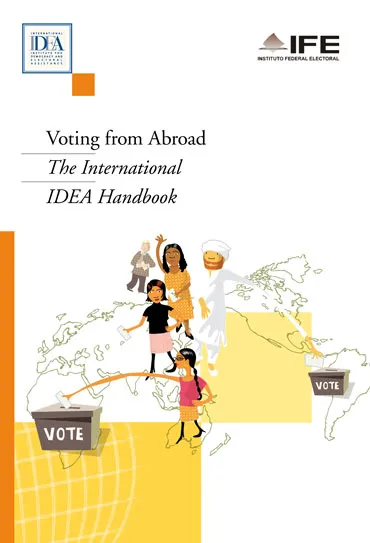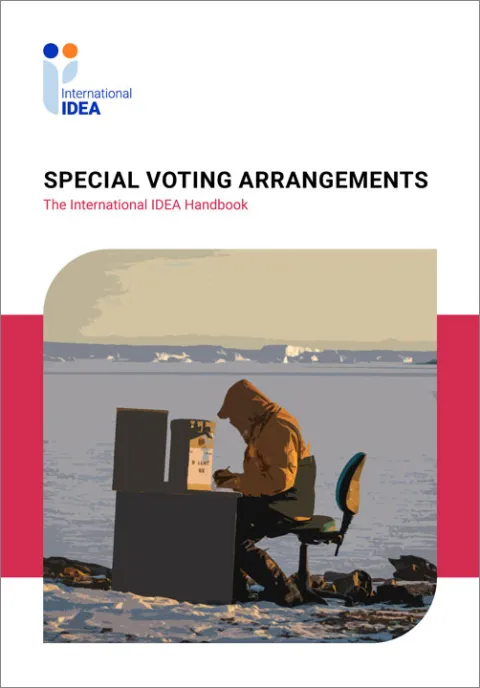Special Voting Arrangements
Special voting arrangements (SVAs) are designed to expand voting opportunities to individuals who are otherwise not able to vote and thus to facilitate the principle of universal suffrage.
SVAs are defined as arrangements that allow voters to exercise their right to vote by alternative means to casting their ballot in person, on election day, in the default polling station in the voter's constituency.
In recent decades, electoral stakeholders have been keen to study and explore the opportunities of how to make voting more accessible and convenient to voters, especially in the face of declining voter participation across the globe. The COVID-19 pandemic has renewed the focus on this topic with the aim to enable the greatest number of people to vote with the lowest amount of risk.
International IDEA's comparative SVA data provides insight into postal, early, mobile and proxy voting for in-country voting in 204 countries. It is intended to inform researchers, policy makers, electoral administrators, and other stakeholders on the use of SVAs across the globe and to initiate research and policy discussions about the strengths and weaknesses of these voting methods and contribute to improvements in their application.
Access this tool to explore in an interactive manner all data presented on the Special Voting Arrangements page!
Additional in-depth information, sources, updates and data download is available from the SVA data pages:
Global Overview
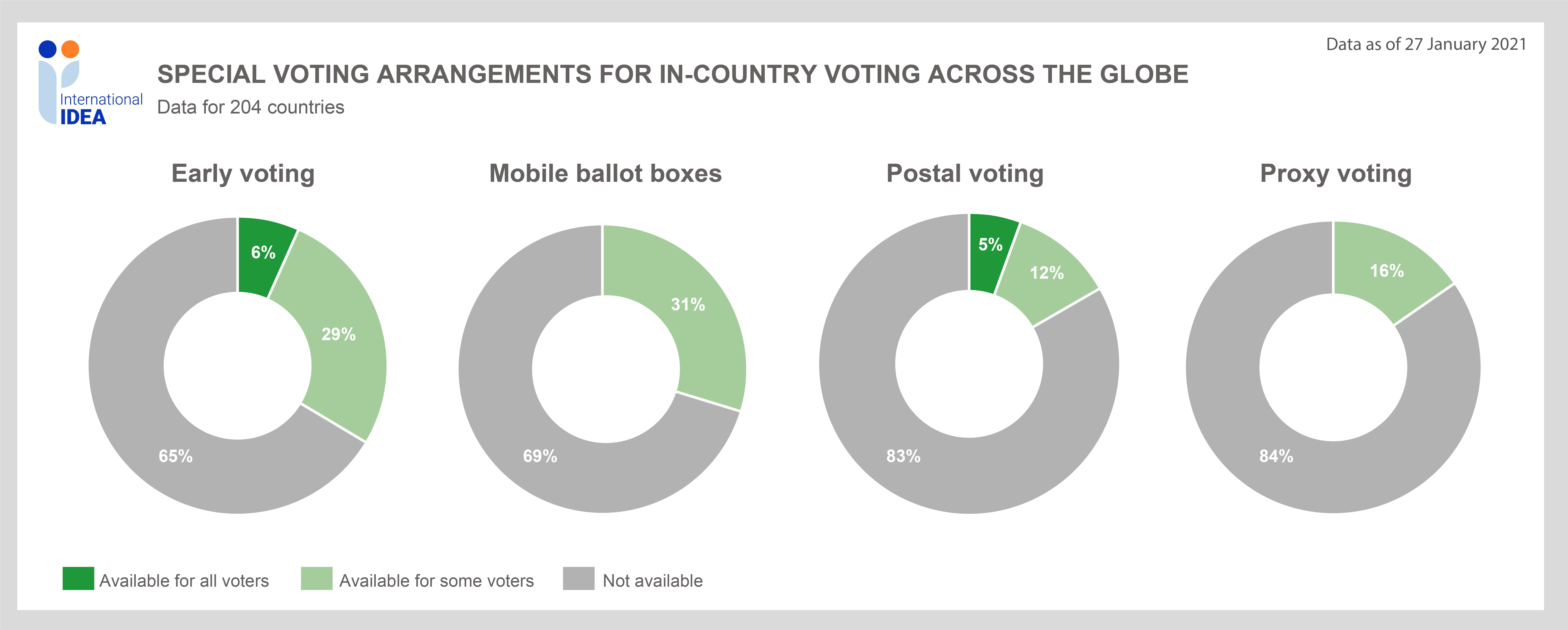
The data in Figure 1 shows early voting as the most frequently used SVA around the world, followed by mobile ballot boxes, postal voting and proxy voting.
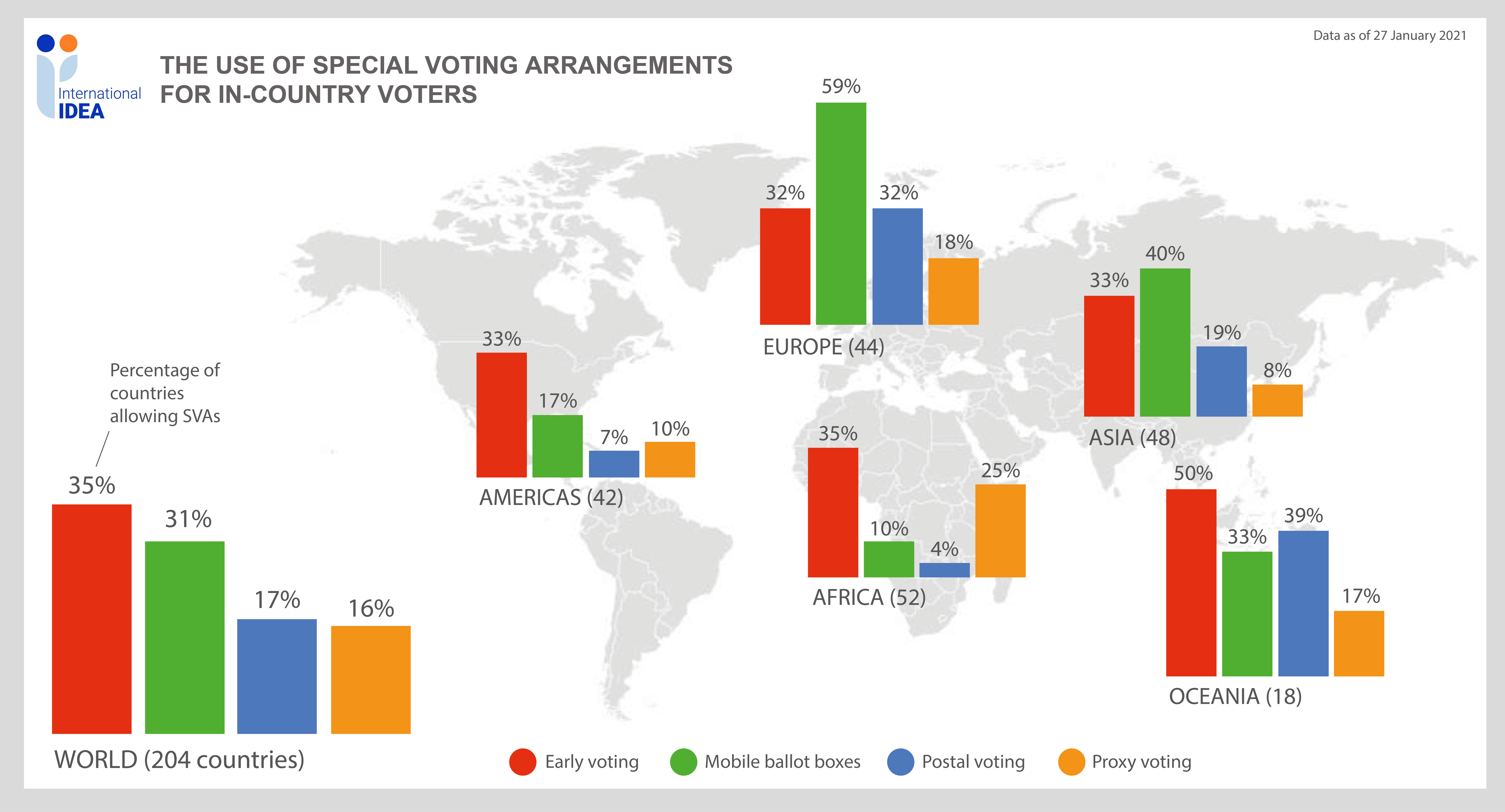
When data are divided by continents (Figure 2) a different picture is presented, with a noticeable variation in the use of different types of SVAs across the continents. In Europe, Asia and Oceania SVAs are comparatively more common than in the Americas and Africa. A more detailed presentation of the data by continent is presented below in the text.
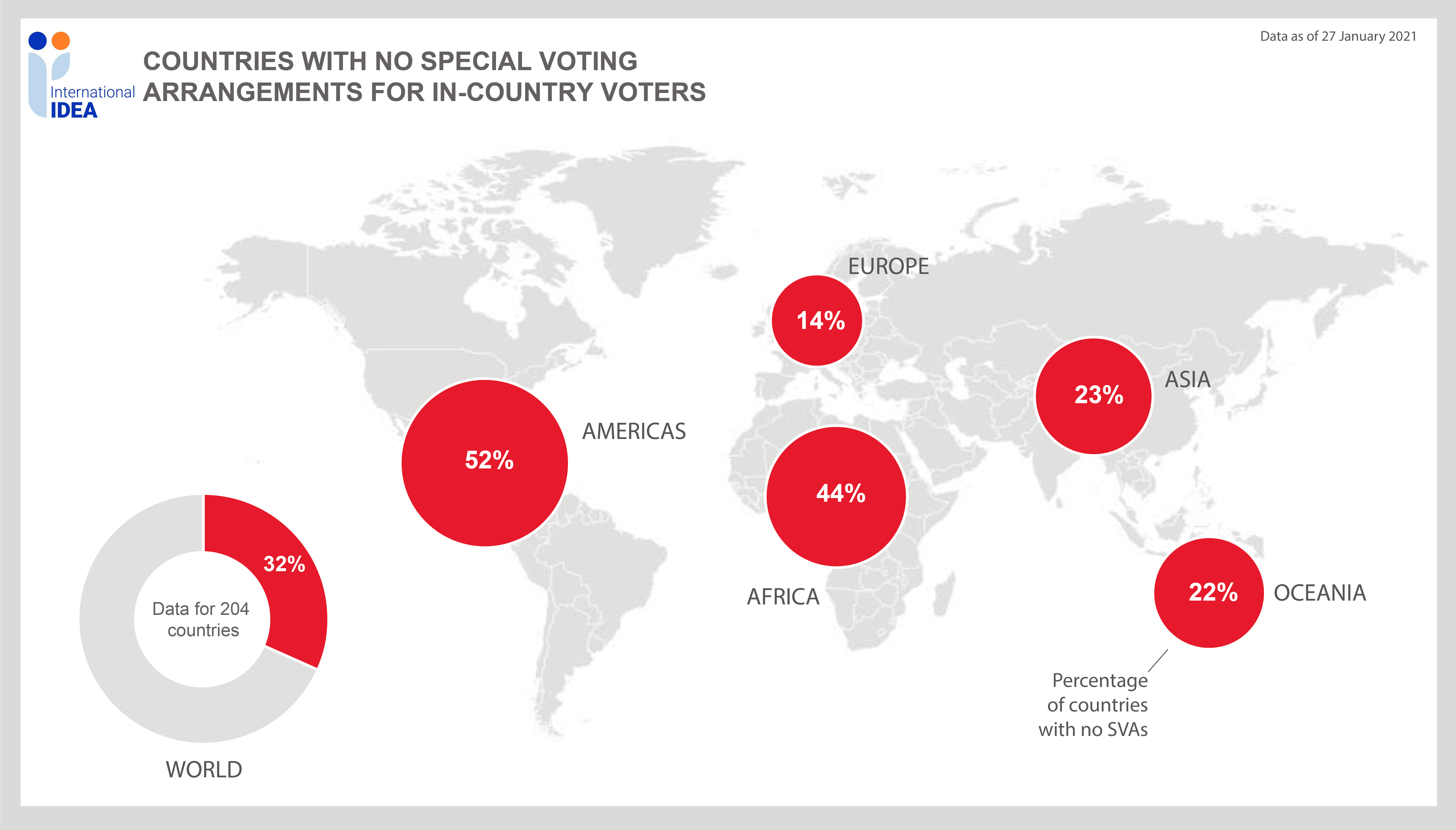
Figure 3 shows that globally one third of countries do not offer any SVAs for in-country voters. Europe has the lowest percentage of countries without SVAs, followed by Oceania and Asia. In Africa, the proportion of countries with no SVAs is significantly higher at 44%. The proportion of countries with no SVAs is highest in the Americas with 52%. In 20 Latin American countries (*) the proportion of countries not using any of the SVAs reaches as much as 75%.
(*) Argentina, Bolivia, Brazil, Chile, Colombia, Costa Rica, Cuba, Dominican Republic, Ecuador, El Salvador, Guatemala, Haiti, Honduras, Mexico, Nicaragua, Panama, Paraguay, Peru, Uruguay, Venezuela.
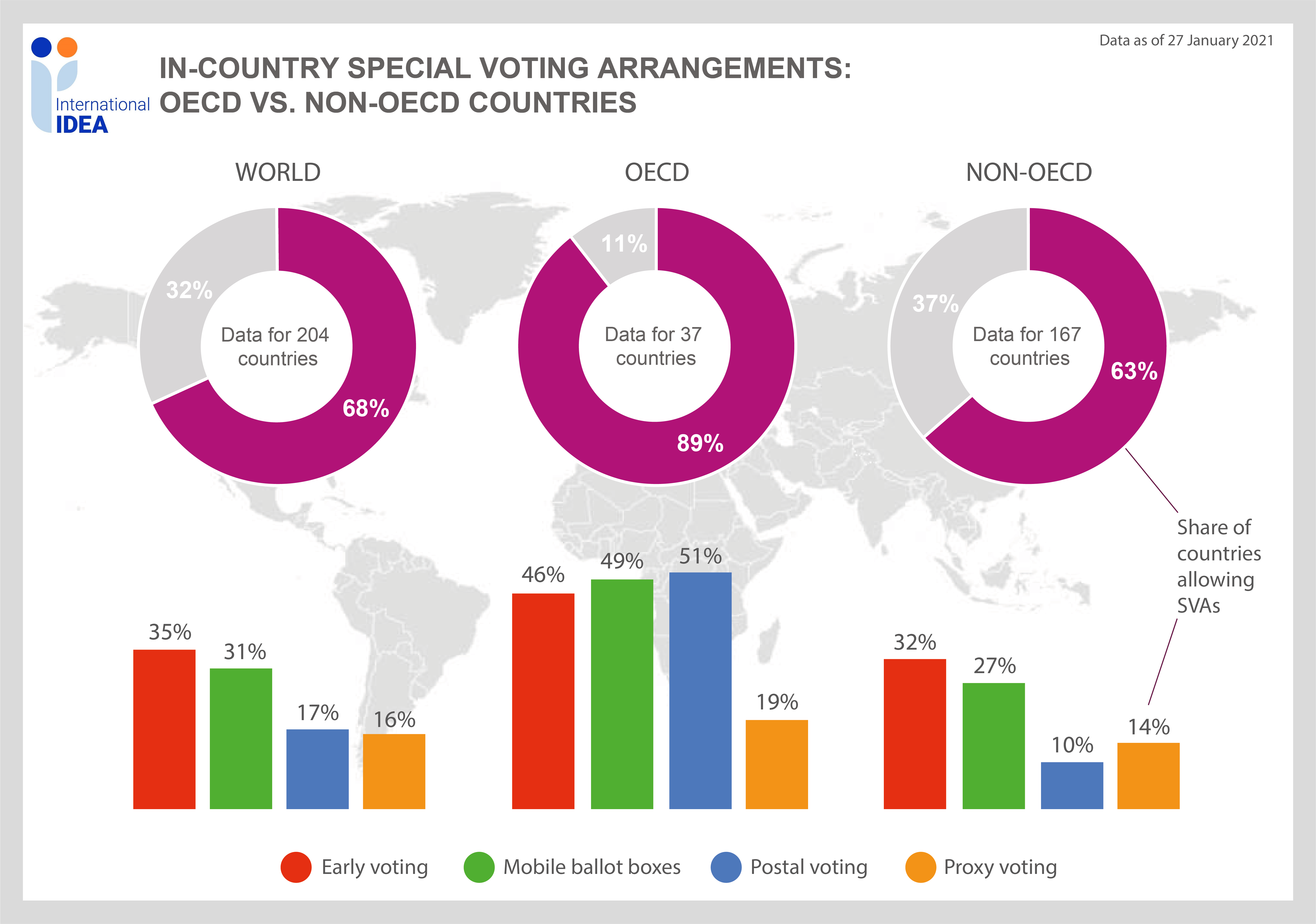
Another interesting angle is to look at the data from the perspective of comparing OECD with non-OECD countries (Figure 4). The non-OECD group has three times more countries which do not use any SVA. Postal voting is the least used SVA in non-OECD group.
Regional overview
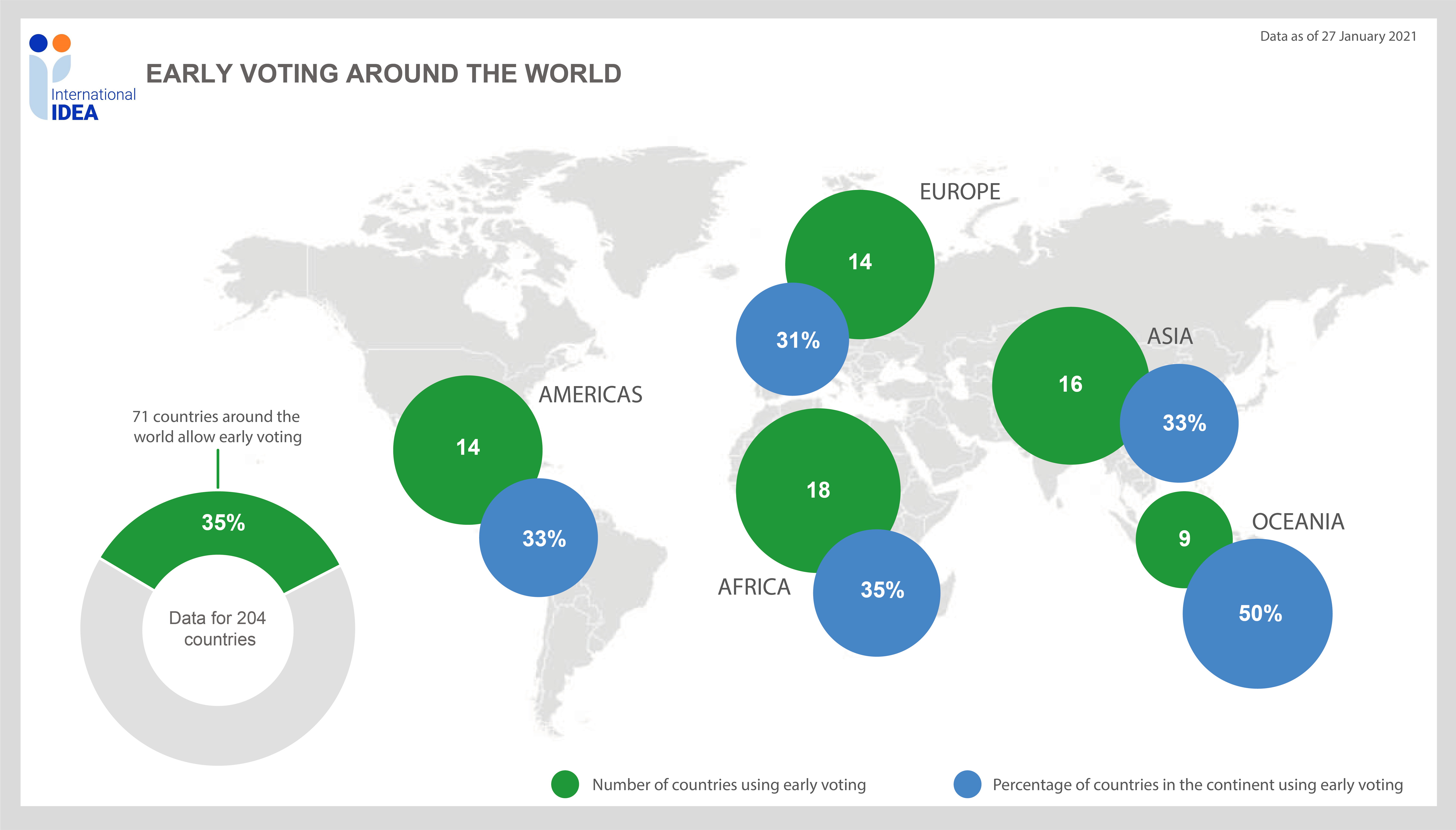
Figure 5 shows that the use of early voting is rather evenly spread out across the globe. Even if only 9 countries are using early voting in Oceania, this represents half of the countries in the continent. This means this type of SVA is more common in Oceania compared to other continents. In total 18 countries are using early voting in Africa. With this, the share of countries using early voting in Africa is slightly higher compared to Europe, the Americas and Asia.
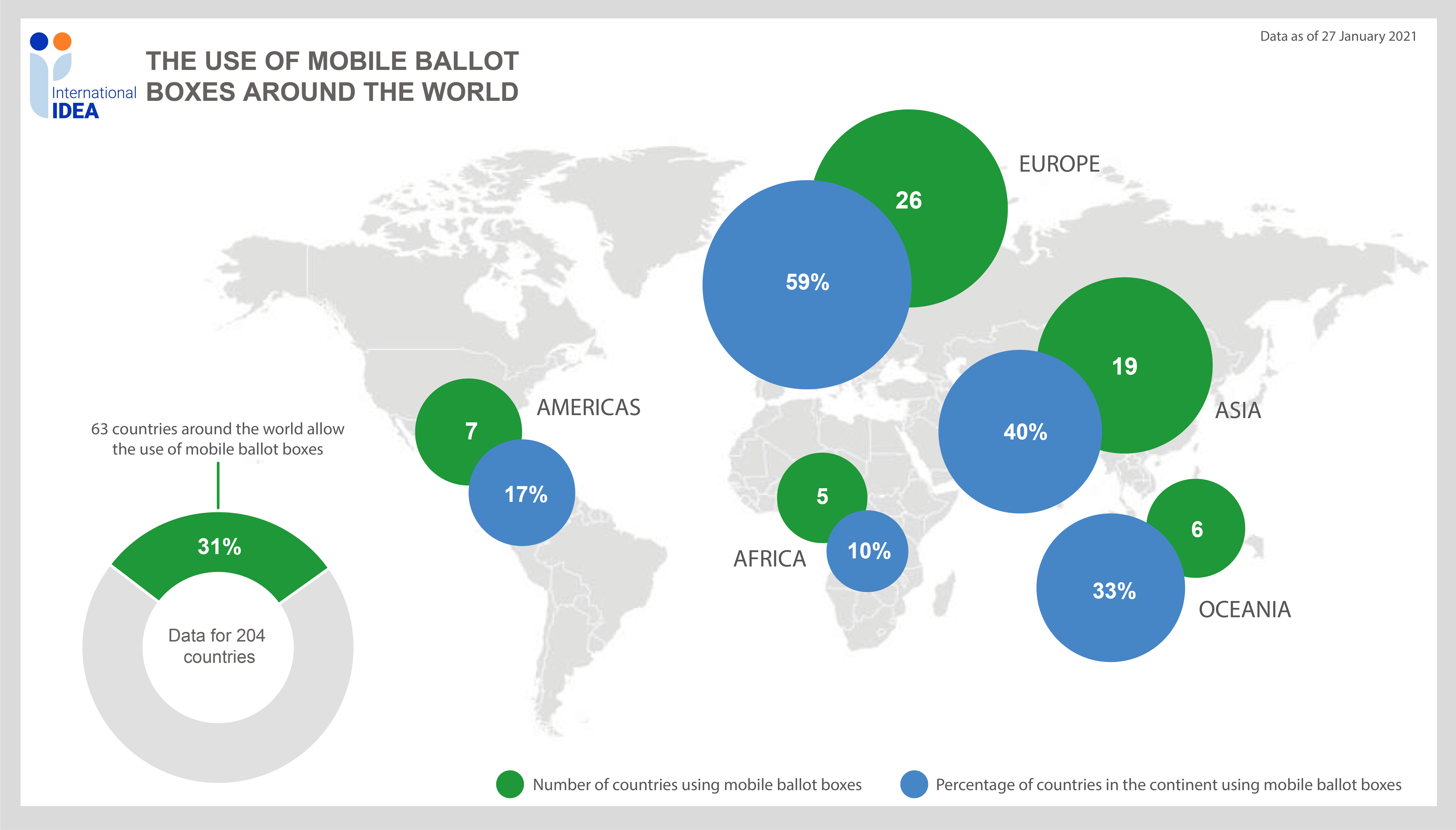
Figure 6 shows that the mobile ballot boxes are mostly used in Europe and Asia, and to a lesser extent in Oceania. The use of this type of SVA is rather limited in the Americas and Africa.
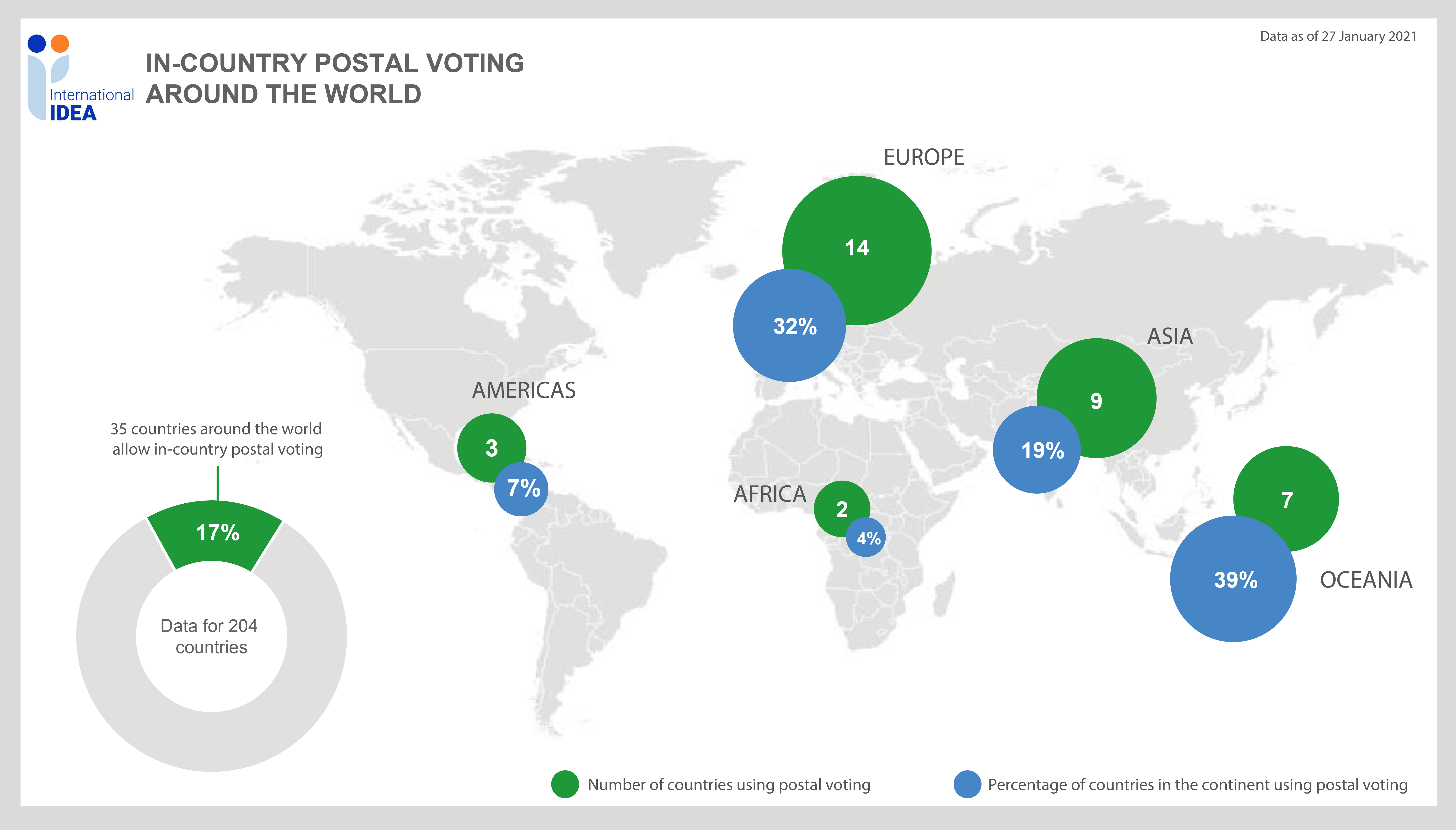
According to the Figure 7, in-country postal voting is rarely used in both the Americas and Africa. This type of SVA is more common in Europe, Asia and Oceania. Oceania has the highest proportion of countries using postal voting.
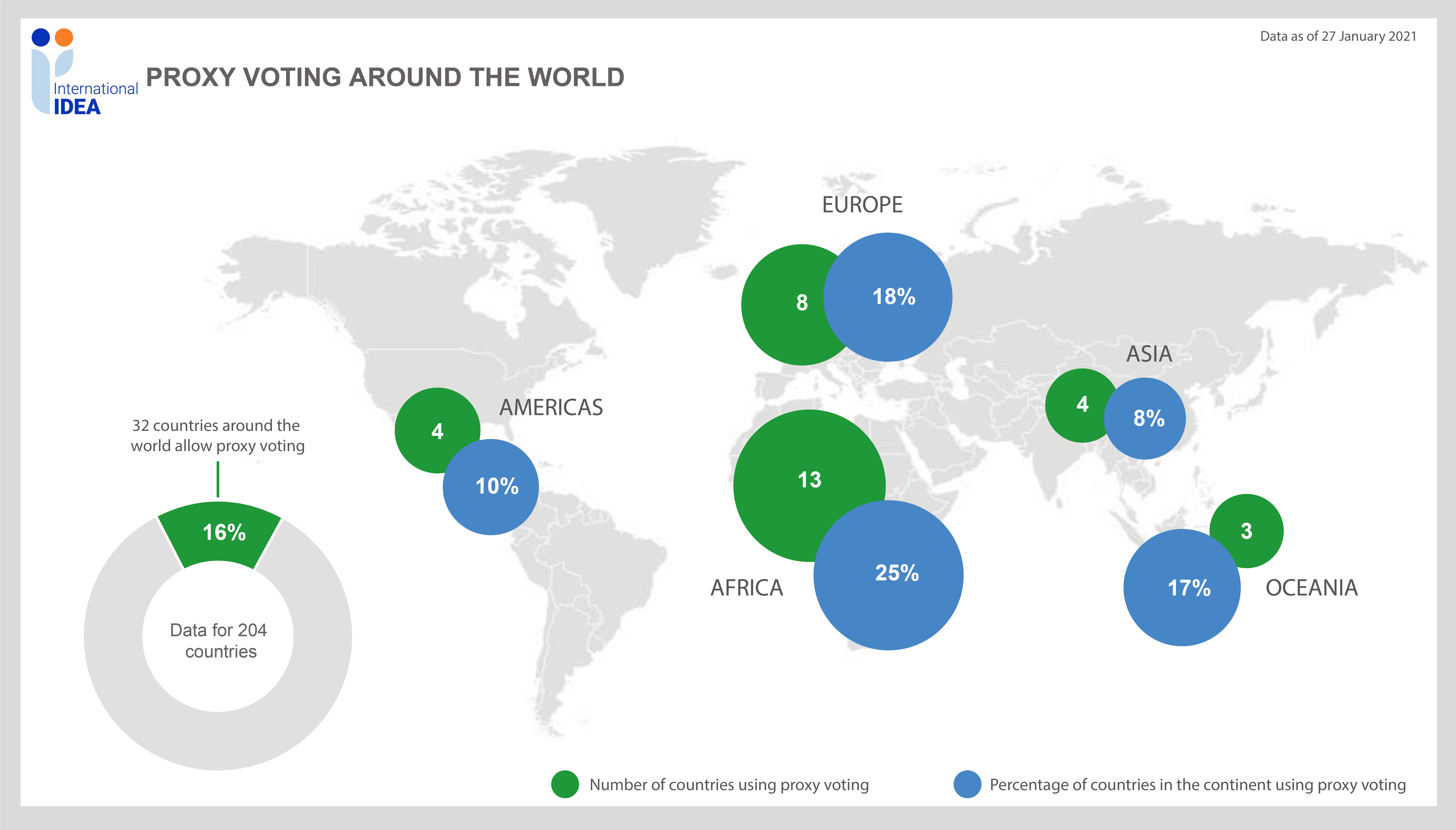
Figure 8 shows that Africa leads the world when it comes to the use of in-country proxy voting. Europe and Oceania have lower levels of use of this type of SVA. In the Americas and Asia, the use of proxy voting is very limited.
Country Level Details
This section provides more in-depth information about the use of SVAs at the regional as well as country levels. It attempts to describe some general tendencies or commonalities in the use of specific SVAs across the regions and countries.
Figure 9 shows the countries which use early voting.
In the Americas, early voting is allowed for all voters in Canada and Colombia. In the US, 43 out of 50 states allow early voting for all voters. Ten countries in the Americas allow early voting for some groups of voters. Most of those countries (70%) are located in the Caribbean: Anguilla, Bahamas, Cayman Islands, Grenada, Jamaica, Saint Lucia, and Trinidad and Tobago. The remaining countries which allow early voting for some voters are Bermuda, Guyana, and Panama. The vast majority of countries in South America do now allow early voting in any form.
In Europe, the use of early voting appears to be predominantly a Northern European phenomenon: Denmark, Estonia, Finland, Latvia, Norway, and Sweden allow early voting for all voters. In Western Europe, only Switzerland and Portugal allow early voting for all voters. Iceland, Malta and Slovenia allow early voting only for some voters. Among the Eastern European countries, Belarus, Lithuania and Russia allow early voting for some voters. In general, 68% of countries in Europe do not allow early voting in any form.
In Africa, 17 countries (33%) allow early voting for some voters and only Angola allows it for all voters. The use of early voting is comparatively spread out across the continent. 65% of countries in the continent do not allow early voting in any form.
In Asia, 16 countries (33%) allow early voting for some voters and there are no countries in the continent allowing early voting for all voters. The spread of early voting on the continent is rather interesting - the majority of countries using early voting are grouped in two sub-regions: in the Middle East (Iraq, Jordan, Lebanon, Oman, State of Palestine, and United Arab Emirates) and in South-Eastern Asia (Lao, Malaysia, Myanmar, Philippines, and Thailand). Three Central Asian countries also allow early voting for some voters (Tajikistan, Turkmenistan, and Uzbekistan). 67% of countries in the continent do not allow early voting in any form.
In Oceania, 9 countries (50%) allow early voting for some voters, and there are no countries in the continent which allow early voting for all voters. The two biggest countries - Australia and New Zealand - stand out for their use of early voting. The rest of the countries using early voting are spread out across the Pacific region: Cook Islands, Fiji, Nauru, Niue, Pitcairn Islands, Samoa, and Solomon Islands.
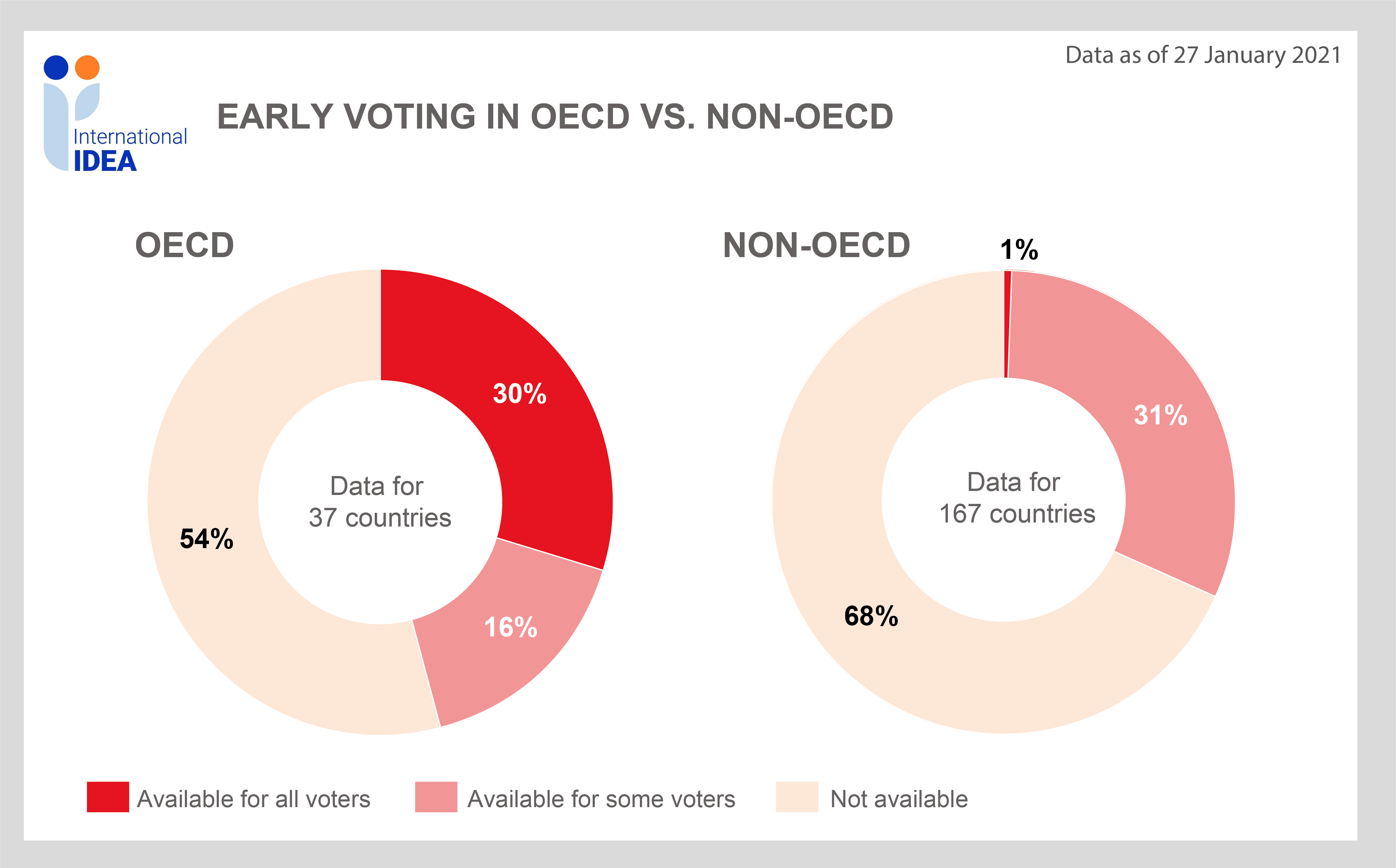
Early voting is available for all voters in 30% of OECD countries, while only 1% of non-OECD countries allow early voting for all voters. The provision of early voting for specific groups of voters varies: more countries allow restricted early voting in non-OECD group (31%) compared to OECD group (16%). In general, the proportion of countries using early voting is higher in OECD countries compared to non-OECD countries (46% vs 32%).
Figure 11 shows the countries which use mobile ballot boxes.
In Europe, the use of mobile ballot boxes is much more common compared to other continents - 26 countries (59%) have provisions for use of mobile ballot boxes. An overwhelming majority of countries in Eastern Europe (90%), a majority of countries in Northern Europe (62%) and less than half of countries in Southern Europe (42%) allow the use of mobile ballot boxes. It is interesting to observe that mobile ballot boxes are very limited in Western Europe; only Austria allows this type of SVA.
In Asia, 19 countries (40%) allow the use of mobile ballot boxes. All five countries of Central Asia and half of the countries of Eastern and South-Eastern Asia allow the use of mobile ballot boxes. However, mobile ballot boxes use is limited in Western Asia, where 4 out of 17 countries (24%) use this type of SVA (Armenia, Azerbaijan, Georgia, and Turkey), and also in Southern Asia, where 2 out of 9 countries (22%) use mobile ballot boxes (Afghanistan and Iran).
Notably, all the countries of the former Soviet Union and a majority of Eastern European countries, which were in the Soviet bloc, allow the use of mobile ballot boxes (see also the above discussion for Europe).
In Oceania, the use of mobile ballot boxes is less common - 33% of countries allow the use of this SVA. Those countries are Australia and five islands of the Pacific region: Cook Islands, Marshall Islands, Micronesia, Nauru, and Samoa.
In the Americas, the use of mobile ballot boxes is limited - only 7 out of 42 countries (17%) provide this type of SVA. Those countries are dispersed across the continent: Bermuda, Canada, Cuba, Cayman Islands, Ecuador, Paraguay, and Suriname.
In Africa, the use of mobile ballot boxes is very limited - only 5 out of 52 countries (10%) allowing this type of SVA. Those countries are Algeria, Ethiopia, Guinea-Bissau, Namibia, and South Africa.
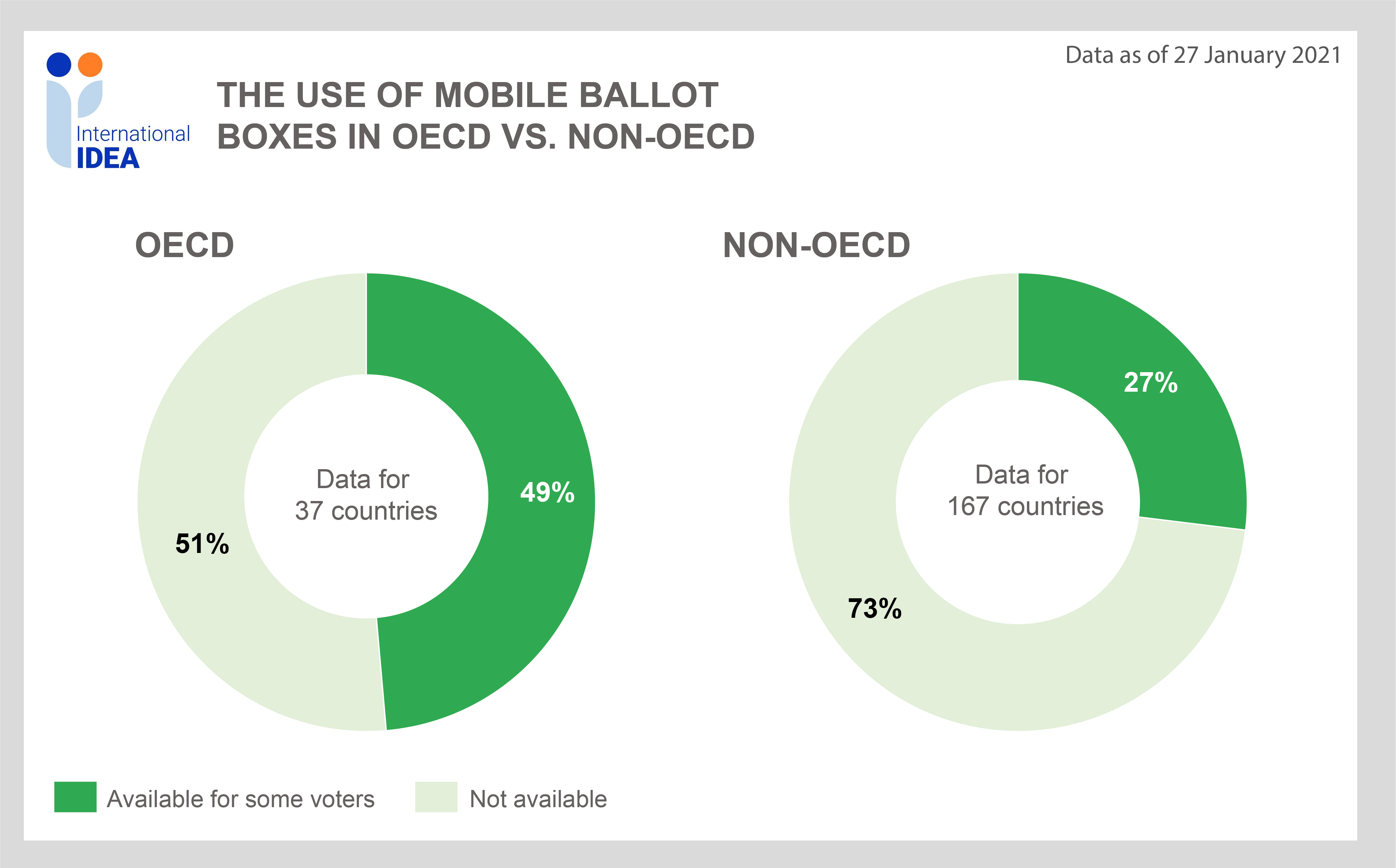
In OECD countries, the use of mobile ballot boxes is available for voters in 49% of countries, while this figure is lower in non-OECD group (27%).
Figure 13 shows the countries which use in-country postal voting.
In-country postal voting is available without restriction to voters in North America, Europe and South Korea and New Zealand. In other parts of the world, postal voting is available only to certain groups of voters.
In Europe, 13 countries (30%) allow in-country postal voting. In addition to the 7 countries (Germany, Iceland, Liechtenstein, Luxembourg, Poland, Switzerland, and United Kingdom) which allow postal voting for all voters, there are further 6 countries which allow postal voting for some groups of voters(Austria, Ireland, Netherlands, Slovenia, Spain, and Lithuania).
In Asia, 7 countries (15%) allow in-country postal voting. In addition to South Korea, which allows postal voting for all voters, there are further 6 countries which allow postal voting for some voters. A majority of those countries are located in South Asia (Bangladesh, Bhutan, India, and Pakistan), Malaysia in South-East Asia, and Japan in East Asia.
In Oceania, 7 countries (39%) allow in-country postal voting. In addition to New Zealand, which allows postal voting for all voters, there are further 6 countries which allow postal voting for some voters. These countries are Australia, Fiji, Marshall Islands, Micronesia, Federated States of, Palau, and Papua New Guinea.
In Africa, in-country postal voting is very limited, with only two countries (Angola and Zimbabwe) allowing this type of SVA for some voters.
In the Americas, Canada allows in-country postal voting for all voters. In two-thirds of the states in the US, any qualified voter can utilize postal voting, while one-third of states require an excuse. Greenland allows in-country postal voting for some voters. In the rest of the countries in the continent, there are no legal provisions for in-country postal voting.
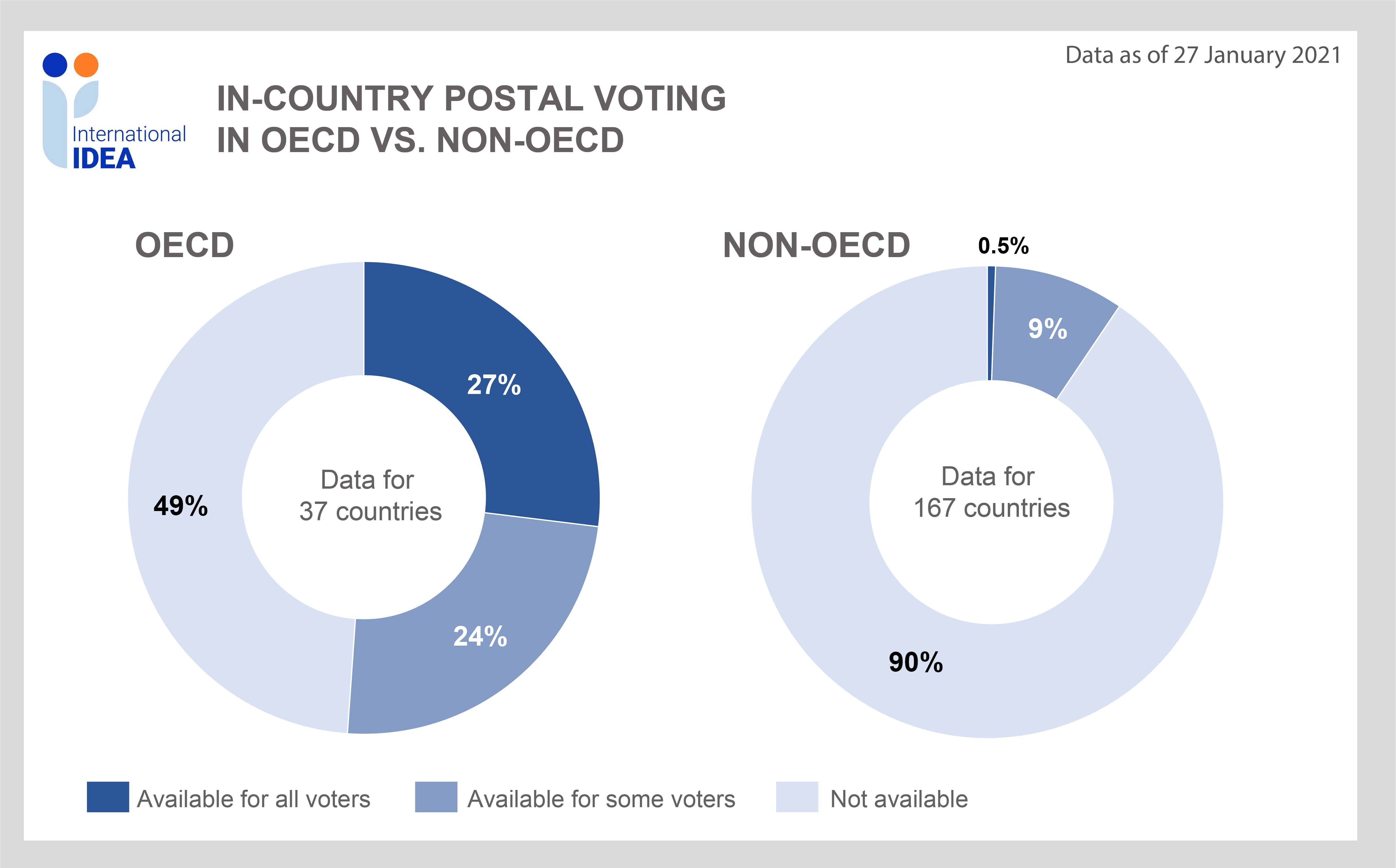
In OECD countries, the use of in-country postal voting is much more widespread compared to non-OECD countries. 27% of OECD countries allow in-country postal voting for all voters, while only one country (Liechtenstein) in non-OECD group does the same. In-country postal voting is available for some voters in 24% of OECD countries, while this figure is only 9% in non-OECD countries.
Figure 15 shows the countries which use in-country proxy voting.
In Africa, proxy voting is more common than in any other continent - 13 countries (25%) have provisions for in-country proxy voting. Those countries are located mainly in the Northern and Western part of the continent.
Europe is on the second place in the frequency of the use of proxy voting - 8 countries (18%) allowing this type of SVA. The majority of those countries are located in Western Europe.
In Oceania, in-country proxy voting is very limited - with only 3 countries (17%) allowing this type of SVA for some voters (New Zealand, Pitcairn Islands, Vanuatu).
In the Americas, in-country proxy voting is also rather limited - only 4 countries (9.5%) in the continent (17%) are providing for this type of SVA (Antigua and Barbuda, Belize, Guyana, and Suriname).
In Asia, in-country proxy voting is also very limited, with only 4 countries (8%) allowing this type of SVA (China, India, Japan, and Saudi Arabia). However, the sizes of these countries may portray the picture as if proxy voting is widely available in the continent.
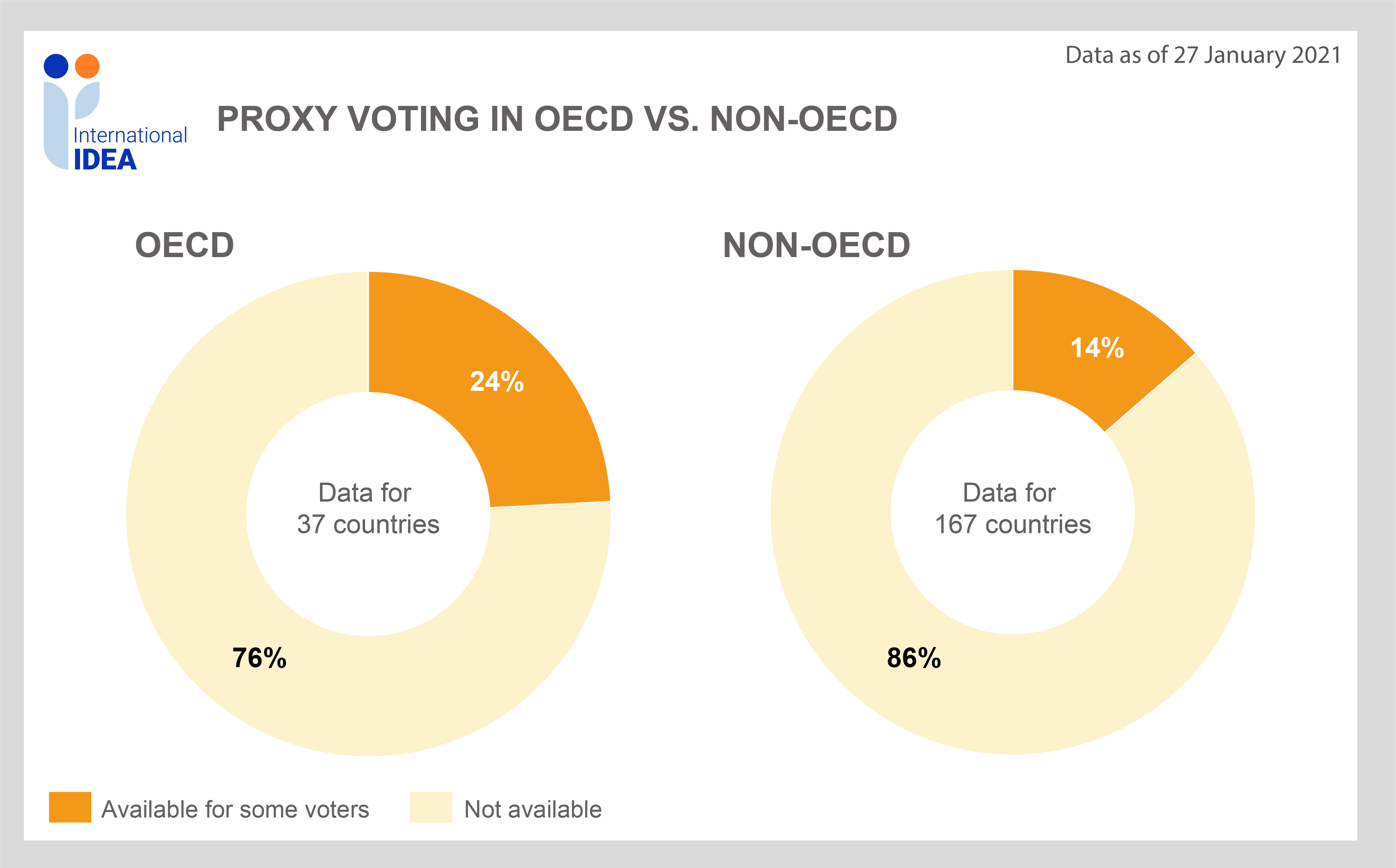
In OECD countries, the proportion of countries allowing in-country proxy voting is greater compared to non-OECD countries: 24% of OECD countries allow proxy voting, while 14% of countries in non-OECD group does the same.
The four SVAs presented above are globally the most common ones for in-country voters. Other, less common SVAs include online voting covered in International IDEA's ICTs in Elections Database. Online voting is currently available in 12 countries and in most cases limited to voting from abroad.
Special arrangements for out of country voters, including postal voting, proxy voting, in-person embassy voting and online voting from abroad are covered in International IDEA's Voting from Abroad Database.
Methodology
The global data was collected using the desk research. Researchers coded the data based on specific regulations providing for SVAs in the electoral legislation and the regulations of electoral management bodies. Whenever possible, those legal provisions were checked against the real-life implementation of SVAs. The infographics on this page are based on data from March 2021.
All data is derived from the texts of the laws and/or regulations. In some cases, researchers had to make difficult decisions when coding certain uses of SVAs. In some countries, regulations vary by region or type of election.
More in-depth information about the country cases, the latest available updates and data download is available from the In-country postal voting, Early voting, Mobile ballot box, and Proxy voting country data pages.
Types of SVAs covered
Postal voting is defined for this dataset as those measures that allow voters to submit their ballot by physical post to the election administration. While postal voting is in principle early voting, it differs in that the vote can be physically submitted remotely by the voters themselves.
Early voting is defined for this dataset as in-person opportunities for submitting one's vote at a polling station before election day. Other early methods that are not in-person (such as postal or e-voting) or that do not take place in a polling station (such as mobile ballot box voting) are not included in this category.
Mobile ballot box voting is defined for this dataset as the case when members of the election administration visit a voter either at home or at an institution with a mobile ballot box to facilitate their vote away from their assigned polling station.
Proxy voting is defined for this dataset as cases in which an authorized individual casts or transmits a ballot on behalf of the voter. While proxy voting is generally restricted to special circumstances, some countries allow it for any reason. In most cases, voters must request to vote by proxy in advance and a procedure must be defined for the voters and their proxy to identify themselves.
The global data has been collected in collaboration with the leading regional organizations and experts working with elections. These include NAMFREL (Asia and the Pacific), EISA (Africa), SODE (Middle East), and an individual consultant working on the Americas. Data for European continent have been collected by several researchers of International IDEA.
Help us improve our data! Please use the contact form below to provide feedback and corrections, as far as possible, providing supporting sources.
Related resources
- Event Report: Special Voting Arrangements (SVAs) in Europe
- Special Voting Arrangements (SVAs) in Europe: In-Country Postal, Early, Mobile and Proxy Arrangements in Individual Countries
- Event Report: Out of Country Voting: Learning from Practice
- Voting from Abroad Handbook
- Voting from Abroad Database
- ICTs in Elections Database
The data on this page was last updated in January 2021. The data is currently in process of being updated.
Submit feedback
Submit questions or comments about the Data or Tool
How did you find out about this? What do you like about it? What did you expect but did not find in using the Data or Tool?
To see how we handle your personal data, please read our Privacy Policy.

